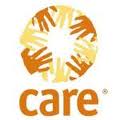In June 2009, I traveled to Titanyen, Haiti, for a week of missionary activity with Mission of Hope, my second journey to the poorest nation in the Western Hemisphere. On our last morning, we began the trip back to the Port-au-Prince airport in the back of a delivery truck, similar to the affectionately called “tap taps” used as public transportation along the few roads that existed.
Because of this mode of travel, there were numerous stops and starts or pauses through each village intersection, partly due to the endless bumps in the asphalt. At one point, my eye caught a glimpse of several children being pushed around, with orders barked to complete some menial task at a roadside market. Probably each of them was 6 to 11 years old; one boy was prodded ahead by force while the others complied, likely in fear for their own safety.
These kids should have been in school or with their family, I thought to myself. I wondered why they weren’t, vowing to find out more in the days ahead.
Once I returned to the States, my real research began. Digging through both missionary and governmental reports, I discovered the ugly truth that tens of thousands of Haitian children are held in bondage as child laborers. The modern restavek (or restavec) system, where children “stay with” a caretaker, is often an excuse for slavery, abuse, and the most horrific treatment of children imaginable. The earthquake only worsened the situation. My only comfort was the thought that I was glad it was not happening in my town.
I continued to support efforts in Haiti and began to advocate on behalf of its children. Yet as I continued to read about modern slavery, now often called human trafficking, I unearthed an evil closer to home.
Slavery is alive and well in the United Stated of America.
In fact, there has yet to be a day without slavery in our nation. Federal statistics report as many as 18,000 people are trafficked into the US every year. They are used and abused in several ways—in agriculture, sweatshops, as domestic servants, and in sexual exploitation. Few speak English or know how to escape. Most go undiscovered and without help.
Further, recent research shows that as many as 100,000 or more domestic minors (US children under 18) are used for the purposes of sexual exploitation each year, a crime known as sex trafficking, which continues to grow despite a number of new laws and initiatives.
As a person who loves Jesus and seeks to live His calling to help those in need, I felt an obligation—a calling—to respond. I prayed, fasted, wept, studied, and began to talk with people I thought could help. In the process, I shared my concerns with my friend Charles Powell, a friend and film producer in the Atlanta area. He replied that he was in the process of launching a new nonprofit to stand against human trafficking and had been praying about how to begin. That conversation became the beginning of the new book and DVD Not in My Town.
Not in My Town calls Christians to fill the gap between human trafficking victims and those who seek to help. It’s a vision that challenges us to consider:
- What if every church in America started a ministry to help stop modern slavery?
- What if every major college had an organization to fight human trafficking?
- What if every major Christian denomination and organization made it a top priority to end global slavery?
- What if in five years, when people ask who are the ones working the hardest to stop slavery, the first answer to come to mind was Christians?
This is our dream. This is the Mercy Movement. Find out more at http://www.mercymovement.com/.
[Originally posted here.]

